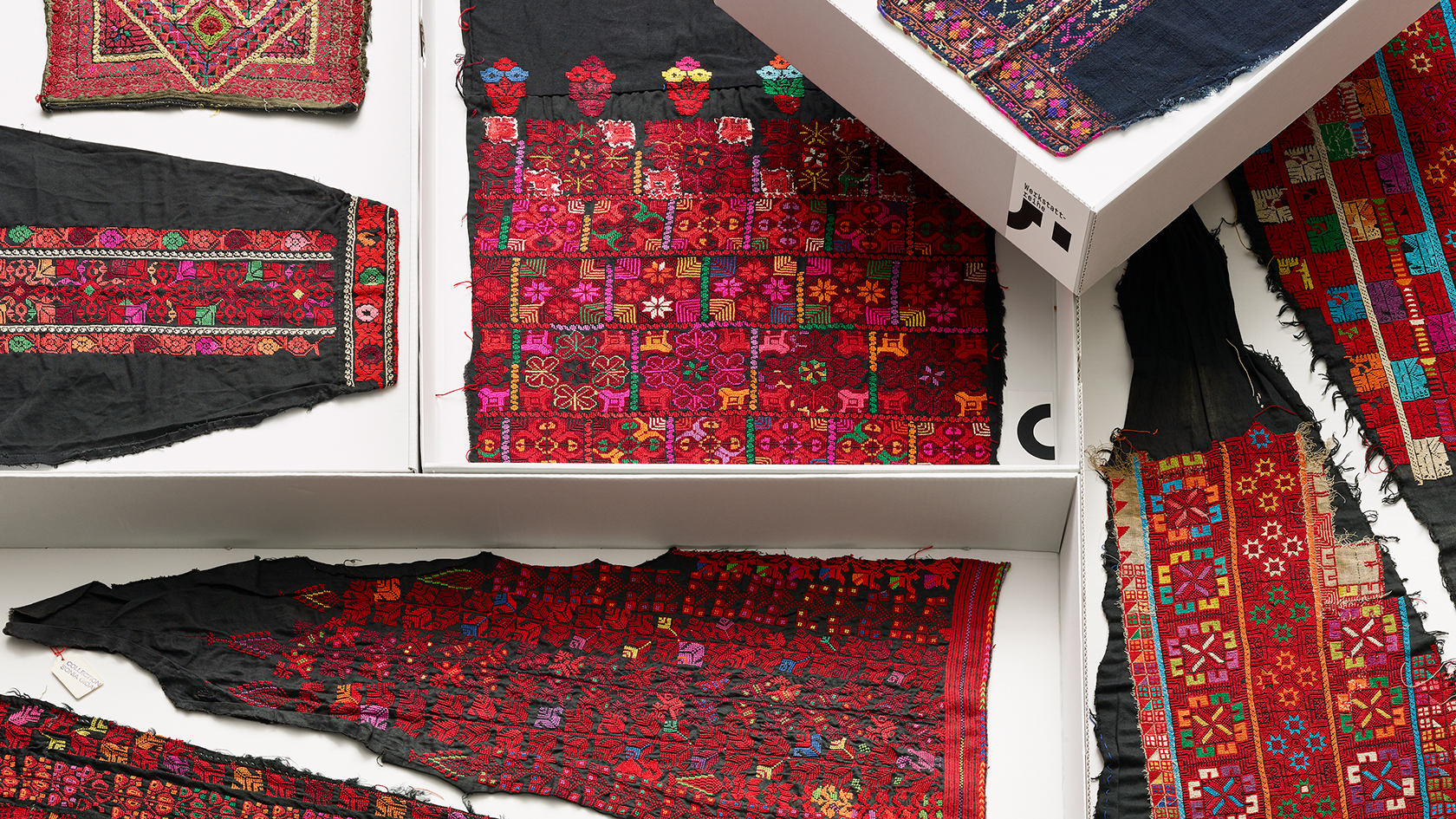Navigation auf uzh.ch
Navigation auf uzh.ch

A table with chairs, next to a display case containing a bag of yarn and tools: these items at the heart of the Ethnographic Museum’s new exhibition, “Workpieces?”, invite reflection and engagement – on and with the exhibits as well as the various contexts in which they can be viewed, used and interpreted.
The objects on display are textiles from the Negev desert: colorful women’s apparel embroidered with geometric patterns, individual items of clothing, towels and bags, made by Bedouin women and bought by the Ethnographic Museum in the 1980s and 90s.
The exhibition was curated by Saada Elabed, a PhD candidate at the Department of Social Anthropology and Cultural Studies. She harnessed her own dual role as social anthropologist and descendant of Bedouin embroiderers as a personal starting point for an in-depth exploration of the textiles from different perspectives. What does an embroiderer see in the objects? What different meanings do they hold for an anthropologist, or for an expert in embroidery? What meaning do they carry for the Bedouin community of origin and their descendants? And what happens when these different perspectives are threaded together?
These perspectives are reflected in short film sequences and various quotes in German, English and Arabic. The exhibition thus includes a variety of voices, ranging from an 80-year-old Bedouin to a thirtysomething student from Shqeb as-Salam, the Ethnographic Museum’s textile restorer as well as the museum’s director. Depending on their origin and everyday life, each of these people sees something different in the textiles – one person may focus on analyzing the cross-stitching technique, while for another, the objects evoke childhood memories.
The exhibition also reflects the curator’s personal connection to the collection by presenting her own large-format photos of the Negev desert. “As a visual anthropologist, I generally draw on my own perception, what I see, hear, smell and taste. These are the ‘raw data’ available to me. When I first examined and smelled the embroideries in the museum storage room, I immediately saw my grandmother in my mind’s eye.” Elabed’s father had come to Switzerland from the Negev region in the 80s, and her relatives on her father’s side still live there.
The run-up to the opening of the exhibition was overshadowed by the renewed violence in the Middle East. This meant that it was unclear whether the work of Zenab Garbia would be available. The ceramics of the artist, who is the curator’s aunt, examine Bedouin embroidery while touching on topics such as gender, for example. An example of this is a coffee pot featuring embroidery, juxtaposing a traditionally female activity (stitching) with coffee-making, which is generally associated with men.
The name of the exhibition, “Workpieces?” references the unique, hand-made embroideries, some of which remain unfinished, as well as the work-in-progress nature of the exhibition itself. It chooses not to present finished research results, but deliberately opens up a space to explore perspectives that have not yet been (properly) considered. For example, it focuses on the views of members of the diaspora, who are often neither fully perceived as members of the community in which they live nor as part of the community of origin, and are thus overlooked. New findings that emerge from the exhibition will be incorporated into the exhibition wherever possible. The exhibition also invites visitors to reflect on their own viewpoints and share their thoughts and impression of the embroideries by using one of the pens and pieces of paper that are available in the center of the room.